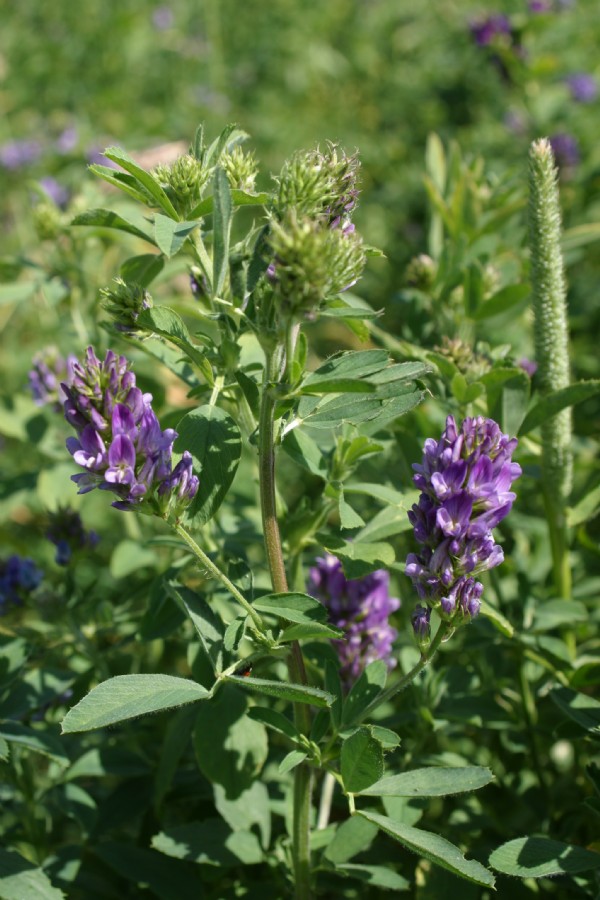

Lucerne often appears to be heading for a revival, then along comes a wet summer and there is not much interest. It has been grown for more than two hundred years and is a major forage crop in the USA and France. In fact in these two countries alone it accounts for 13 million hectares. So what makes this crop attractive to farmers abroad and what benefits can it offer UK producers?
Lucerne is drought tolerant – this is its trump card – and once established it produces regular and reliable yields for four years or more.
Lucerne – A Farmer’s Experience
Mike Trevena farms at the Cotehouse Farm Partnership, Bampton in Oxfordshire, a farm of 470 acres in the Thames Valley. He has 118 Holsteins and milks three times daily. This district has an average annual rainfall in the region of 20 inches. The soil varies from silty loam to sand and gravel.
When Mr Trevena arrived at Cotehouse Farm he had previously experienced growing lucerne in Worcestershire. Eager to establish lucerne on his new farm he grew the crop for five years but had to stop for a while when the soil borne disease Verticillium wilt became a problem. But in recent years he has been able to grow the crop again thanks to newer, disease-resistant varieties.
Currently, one fifth of the dairy cows’ diet comes from lucerne silage with the rest from grass, maize, straw and fodder beet. Mr Trevena found that lucerne was the ideal complement to maize, being high in protein and low on fibre.
Mr Trevena’s main reason for growing lucerne was as an insurance against dry summers and low rainfall. ‘It produces four to five cuts of silage each year,’ says Trevena. ‘and gave consistently high production through two dry summers with DM yields in excess of 15T/ha. It is critical to make the silage well.’ he insists. ‘it should be cut at first sign of flowering with a mower/conditioner then wilted for 36 hours being careful to avoid excess movement so that leaf loss is kept to a minimum. It is essential to use a silage innoculant and in my experience big baling results in less wastage than clamped silage,’ he said.
Mr Trevena usually direct seeded his lucerne in the early autumn. However after dry weather in the autumn, he sowed in the spring and added a half rate of barley seed as an arable silage in order to push up the yield in the establishment year. Weeds were not a problem and herbicides were not usually needed. The lucerne crop is left in the ground for five years and is sown with a non-aggressive companion grass mixture of cocksfoot and timothy which helps fill the base of the crop and assist the silage making process.
by Ian Wilkinson of Cotswold Seeds, based on an article in 'Forage Matters'.
Date Posted: 30th March 2017




